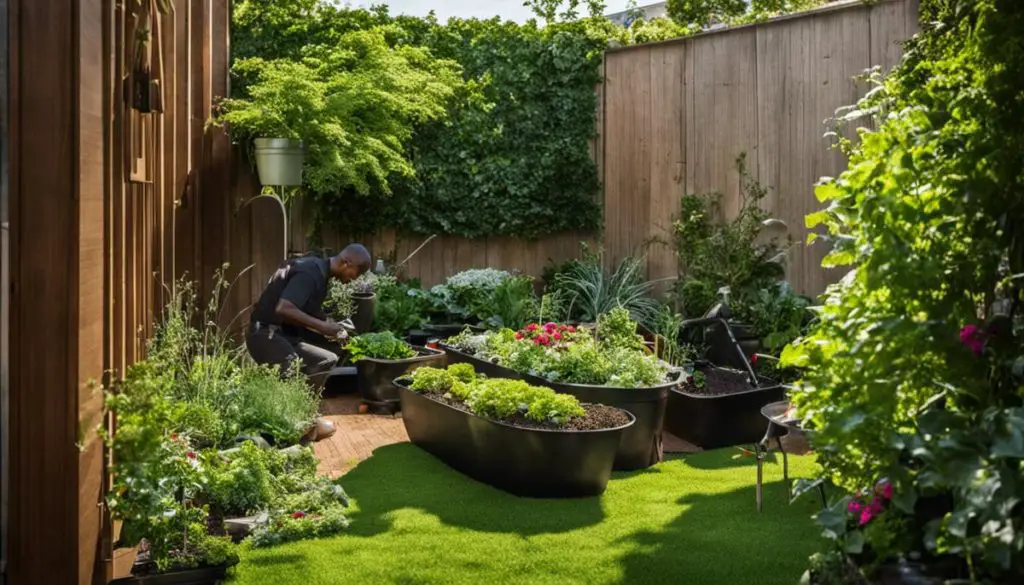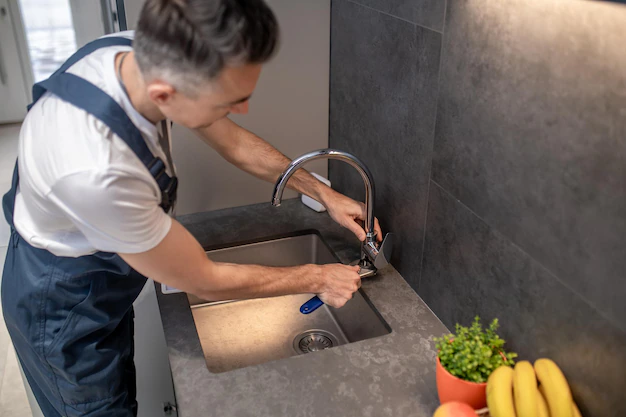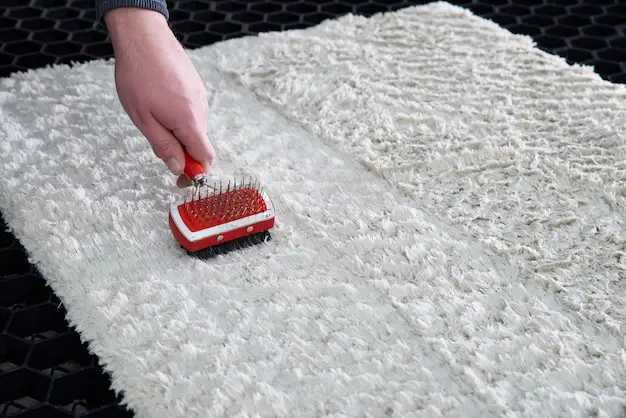Welcome to a journey through the wonderfully productive world of urban gardening! This exploration balances the constraints of small spaces and scarce natural light with the joy of ushering life from a simple seed.
We shed light on some irreplaceable principles of urban gardening, such as the smart use of space by deploying vertical and container gardening methods. Though urban gardening might present some unique challenges, with knowledge and application, you can turn your urban space into a blooming oasis.
Get ready to learn more about selecting suitable plants that thrive in your local climate and preferred light and nutrient conditions, closely followed by diving into the fundamentals of soil preparation and smart water management.
Table of Contents
Basics of Urban Gardening
Urban Gardening Defined
Cultural shifts and space constraints lead many people to turn to urban gardening — the process of growing plants within a city or highly populated town or municipality. The appeals of urban gardening range from food security, access to fresh produce, environmental sustainability, and the therapeutic benefits of gardening.
The challenges for urban gardeners vary, including limited natural light, smaller space, soil quality, and water availability. However, strategies such as efficient use of space, vertical gardening, and container gardening can help overcome these issues.
Efficient Use of Space in Urban Gardening
One fundamental concept of urban gardening is the efficient use of space. This means maximizing the use of the available area to grow as many plants as possible without compromising their health or growth.
This can be achieved through strategic plant placement, using dwarf or miniature plant varieties, and using multi-purpose installations (such as trellises that provide support for climbing plants and also serve as privacy screens). Remember to leave enough room for you to move around and care for the plants.
Vertical Gardening Concepts
Vertical gardening is another tool urban gardeners can use to maximize their space. This method involves growing plants upwards rather than outwards, using structures like trellises, hanging baskets, and vertical planters. It is especially useful for plants like beans, tomatoes, and cucumbers that naturally climb.
Vertical gardening can also be deployed indoors, on balconies, or in small backyard spaces. It’s not only efficient but also offers an aesthetic appeal to the urban space.
Container Gardening
When natural soil is scarce or non-existent, container gardening offers a versatile and portable solution. Almost any plant can be grown in a container, from herbs and vegetables to flowers and shrubs.
Key factors for successful container gardening include choosing the right size and type of container, using a high-quality potting mix, ensuring good drainage, and regular watering and feeding. Containers can be arranged to take advantage of the best light and can be moved indoors over winter if necessary.
Dealing with Limited Natural Light
Limited natural light is a common challenge in urban gardening, with buildings often blocking sunlight. To cope with this, urban gardeners can take advantage of reflective materials like white paint or aluminum foil to maximize natural light.
Choose plants that can thrive in low-light conditions, such as ferns, hostas, or mint for edible gardens. Artificial lighting might also be necessary, especially when growing indoors.
Overcoming Smaller Space Constraints
The lack of space can limit the variety and number of plants in an urban garden, but thoughtful planning and organization can help get the most from a small area.
Intercropping, the practice of growing two or more crops in close proximity, can be a smart use of space. Use vertical spaces, balconies, window sills, and even rooftops (if it is safe and permitted by local ordinances) to bolster your garden space.
Storage boxes, old buckets, or even shoes can serve as unconventional planters, giving waste materials a new life and adding unique flavor to your garden.
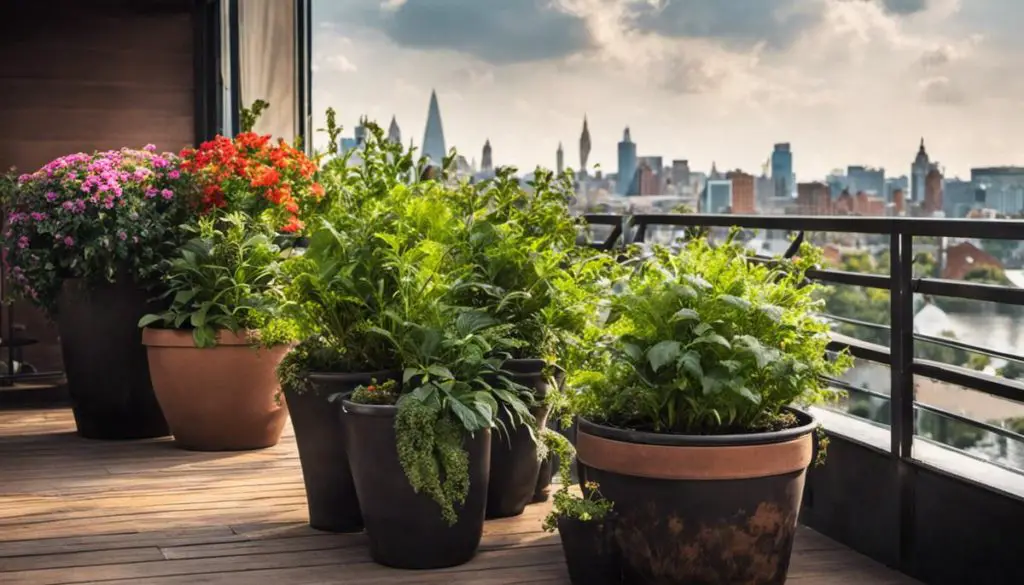
Selecting Suitable Plants for Urban Gardens
Light Requirements
Different plants have different sunlight needs, which are usually categorized: full sun, partial sun, partial shade, and full shade. Full sun plants need 6 to 8 hours of direct sunlight daily, while partial sun and shade plants require 3 to 6 hours.
Full shade plants can thrive in less than 3 hours of direct sunlight. For urban gardening, it’s vital to evaluate the available sunlight and select plants accordingly.
Assessing Water and Nutrient Needs
Just as with sunlight, plants also have different water and nutrient needs. Some plants like succulents require minimal watering and can thrive in poor soil, while others such as many types of vegetables require constant moisture and nutrient-rich soil.
Evaluate your capabilities and preferences in maintaining your garden regarding watering and adding fertilizers or compost. This will guide you to choose suitable plants.
Seasonal Versus Perennial Plants
Be aware of the difference between seasonal and perennial plants. Seasonal plants are those that complete their life cycle in one season. After their blooming phase, they wither and need to be replaced.
On the other hand, perennial plants can live for more than two years. They typically have less blooming time, but they eliminate the need for yearly replacements.
Adapting to Your Local Climate
Climate plays a crucial role in plant selection for your urban garden. Understand the USDA Hardiness Zone of your area, a system that categorizes regions based on the coldest temperatures they get annually. This will aid you in choosing plants that can thrive in your local climate conditions.
For example, cacti and succulents are appropriate for arid zones, while ferns and hostas are more fitting for cooler areas.
Considerations for Plant Size and Growth Pattern
When choosing plants, also consider their mature size and growth pattern. In an urban setting where space can be limited, plants that grow too large can be a problem.
Likewise, plants with invasive root systems could disrupt your urban garden. Compact plants such as herbs, small succulents, or dwarf varieties of larger plants can be great choices.
Pollution Tolerance Level of Plants
Air and soil pollution can be an issue in urban environments. Some plants have a higher tolerance for pollution and are therefore more suitable for urban gardens. Maidenhair ferns, peace lilies, spider plants, and certain types of marigolds and hydrangeas are known for their ability to absorb toxins and improve air quality.
Cultivating Edible Plants
Urban gardening also offers an opportunity to grow your own fruits, vegetables, and herbs. When selecting your plants, consider growing produce which can be conveniently harvested.
Tomatoes, peppers, lettuce, spinach, and herbs are often easy to grow in city settings. Not only can this serve as a source of fresh produce, but it can also reduce your carbon footprint by minimizing the need for transportation and packaging.
Soil Preparation and Water Management
Preparing the soil is crucial for the successful growth of your plants. Start with clearing the area of weeds or grass and then proceed to till the soil. Tilling helps to loosen the soil and enables it to absorb nutrients and water more effectively. Additionally, it makes it easier for roots to penetrate the soil.
Add organic matter
You might consider adding organic matter to the soil to improve its fertility and structure. Composting is an effective way to add organic matter to your soil. Composting involves decomposing kitchen waste like vegetable peels, coffee grounds, or eggshells and yard waste like leaves or grass clippings to create nutrient-rich compost.
Add fertilizer if need be
Correct fertilizer application is another important aspect of soil preparation. Fertilizers are comprised of three primary nutrients that plants need: nitrogen, phosphorous, and potassium. Nitrogen promotes leaf growth, phosphorous aids in root and flower development, while potassium supports overall plant health.
It’s a good rule of thumb to first test your soil to determine its nutrient levels before adding fertilizer. You can typically find soil testing kits at garden centers or extension services. Based on the results, choose a fertilizer that suits your soil’s needs.
Ensure good drainage
Drainage is vital to the health of your plants. Poor drainage can lead to waterlogged roots, which in turn can cause root rot and other diseases. Ensure your urban garden has good drainage by building raised beds or adding organic matter to your soil.
When choosing a location for your garden, opt for an area with a slight slope to promote natural water runoff. Avoid creating gardens in low-lying areas where water may collect.
Water correctly
Watering your plants is not simply a case of turning on the hose. Getting your watering techniques right can have a significant impact on your garden’s success. Water in the early morning or late evening when the sun’s intensity is lowest to avoid rapid evaporation.
Water deeply and less frequently rather than shallowly and often. This encourages roots to grow deeper into the soil, making plants more resistant to drought.
Be mindful of soil type in your urban garden
The type of soil you have in your urban garden can affect water drainage and nutrient absorption.
There are primarily three types of soil: sand, silt, and clay. Sandy soil is coarse and drains quickly, but it doesn’t hold onto nutrients well. Silt is very fertile, but it can easily compact and hinder water drainage. Clay soils hold onto water and nutrients, but they can also become easily compacted and drain poorly.
Being able to identify your soil type can help you make better decisions about watering and fertilization.
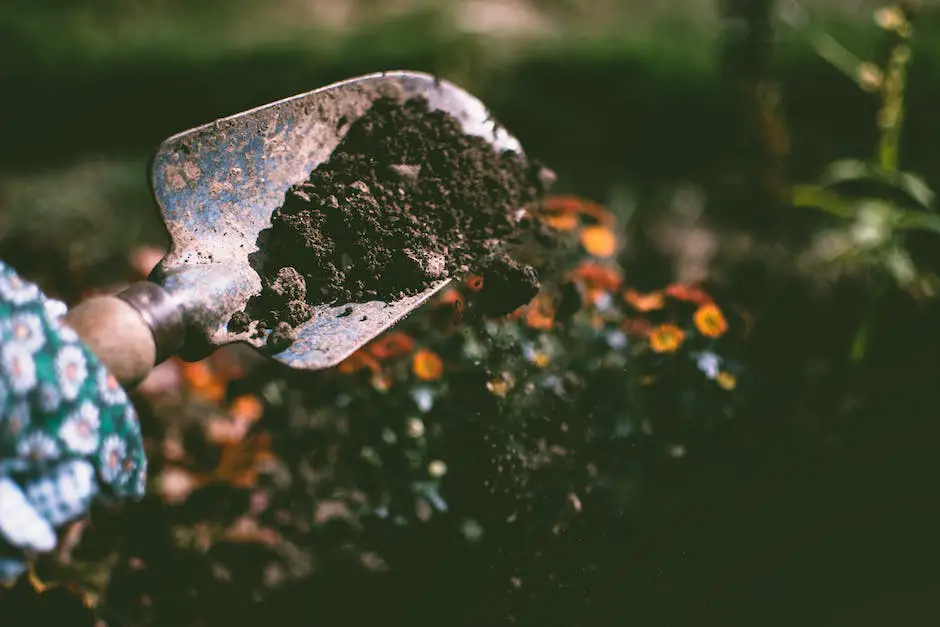
Save water
Conserving water in your urban garden can be achieved through different methods. Using soaker hoses or drip irrigation systems can significantly reduce the amount of water used. These methods deliver water directly to the plant’s roots, minimizing waste due to evaporation or runoff.
Also, consider implementing a rain barrel system to collect rainwater for garden use. Not only does it save water, but it also reduces dependence on municipal water supplies. Mulching is another effective strategy to conserve water as it helps keep the soil moist and reduces evaporation.
Conclusion
What you’ve discovered are essential elements to transforming your urban space into a thriving green patch. Nitpicking suitable plants according to local climate, learning about their individual requirements of light, water, and nutrients are just a part of the puzzle.
The substantial backbone is undeniably formed by understanding soil preparation methods, the practice of composting, the effective use of fertilizers and maintaining good drainage.
It’s important to remember that water conservation techniques are not just beneficial, but crucial for sustainable urban gardening. The understanding of these significant aspects turns challenges into opportunities, making urban spaces a growing testament to urban or city gardening‘s potential.
We hope that this knowledge guides and shapes your journey towards becoming a successful urban gardener.
